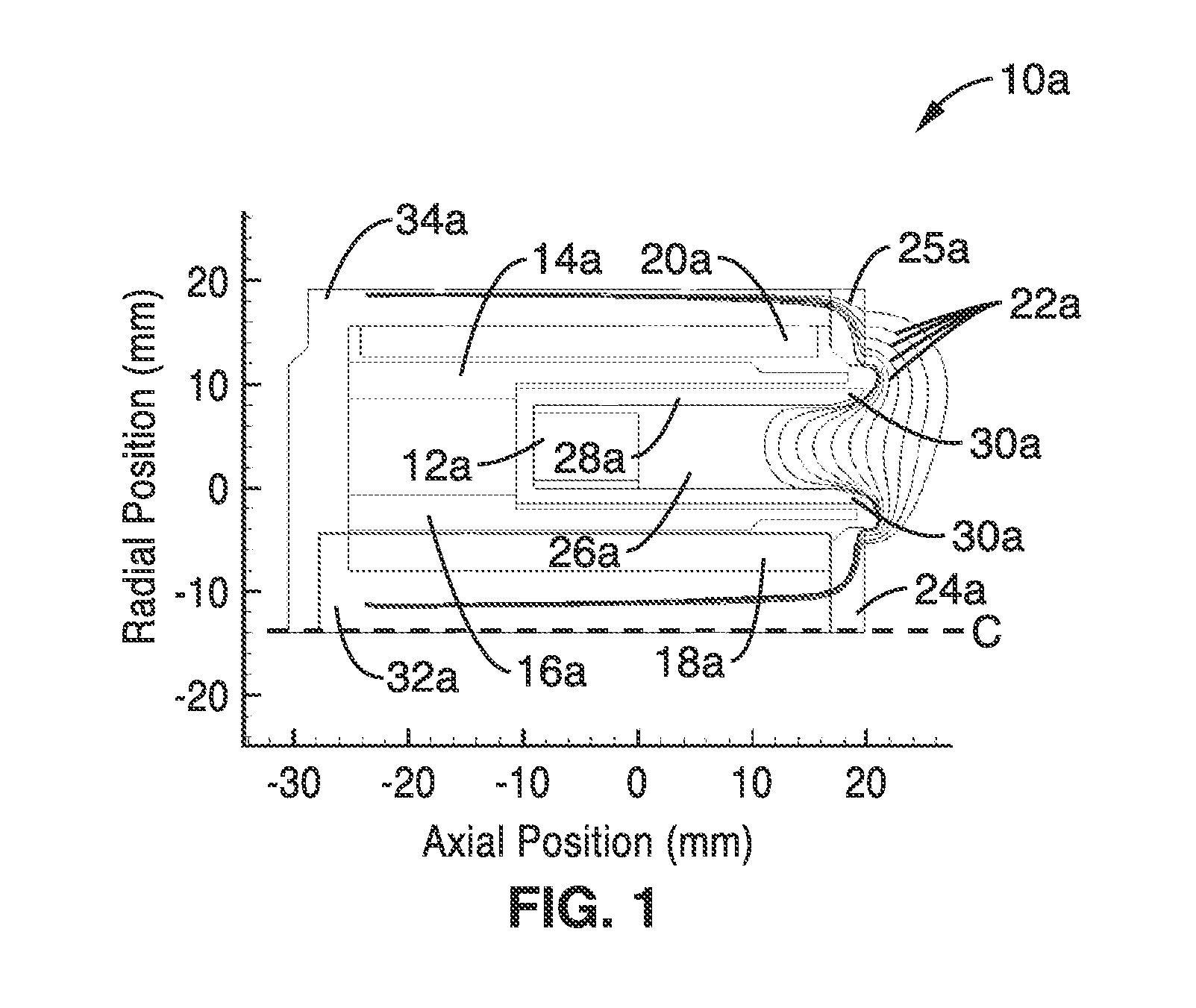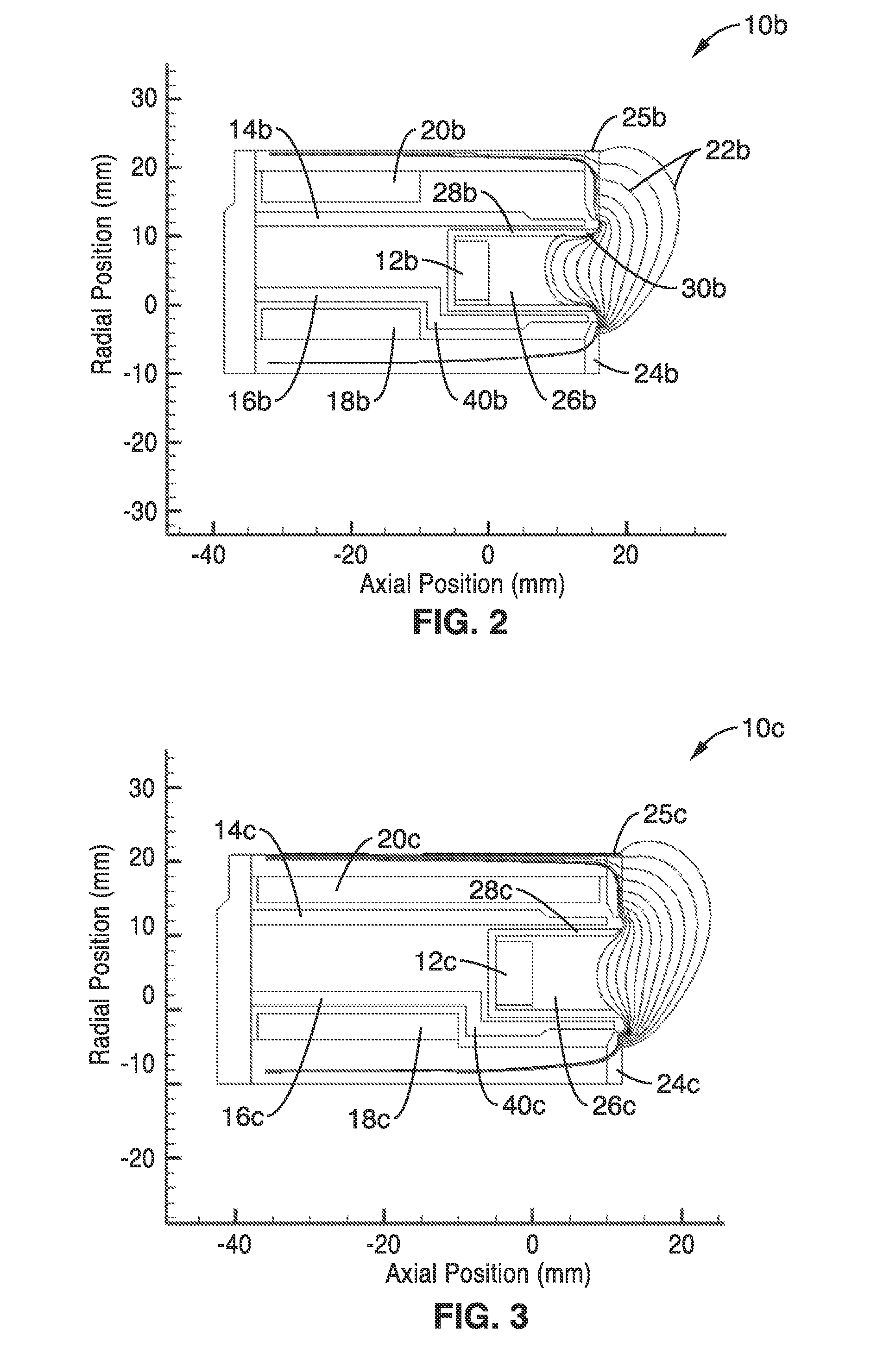Magnetically shielded miniature hall thruster
a hall thruster and magnet shielding technology, applied in the field of hall thrusters, can solve the problems of low electron temperature at the discharge channel wall, high erosion rate, and potential for longer thruster life, and achieve the effect of reducing the radial electric field component, eliminating the effect of ion bombardment erosion of the thruster channel wall, and prolonging the thruster li
- Summary
- Abstract
- Description
- Claims
- Application Information
AI Technical Summary
Benefits of technology
Problems solved by technology
Method used
Image
Examples
Embodiment Construction
[0039]The primary life-limiting factor of conventional Hall thrusters is erosion of the discharge channel walls from ion bombardment. Due to the zero net current condition at the insulating walls, a large sheath potential forms to reject the bulk of the electron population. In turn, the electron repelling sheath adds to the radial electric field component from the bulk plasma that accelerate nearby ions into the walls. The resultant sputter erosion of the wall is concentrated near the exit plane and can wear through the discharge channel walls, exposing the thruster's pole pieces to ion bombardment. Degradation of the pole pieces alters the interior magnetic circuit of the device, eventually degrading the performance of the thruster and ending its useful life.
[0040]Another key performance-limiting factor in Hall thrusters is high-energy electron power loss to the discharge channel walls. In conventional Hall thrusters, the radial magnetic field lines near the exit plane intersect th...
PUM
 Login to View More
Login to View More Abstract
Description
Claims
Application Information
 Login to View More
Login to View More - R&D
- Intellectual Property
- Life Sciences
- Materials
- Tech Scout
- Unparalleled Data Quality
- Higher Quality Content
- 60% Fewer Hallucinations
Browse by: Latest US Patents, China's latest patents, Technical Efficacy Thesaurus, Application Domain, Technology Topic, Popular Technical Reports.
© 2025 PatSnap. All rights reserved.Legal|Privacy policy|Modern Slavery Act Transparency Statement|Sitemap|About US| Contact US: help@patsnap.com



